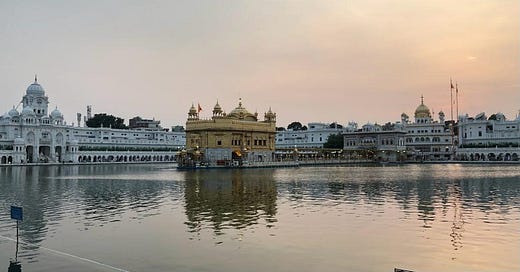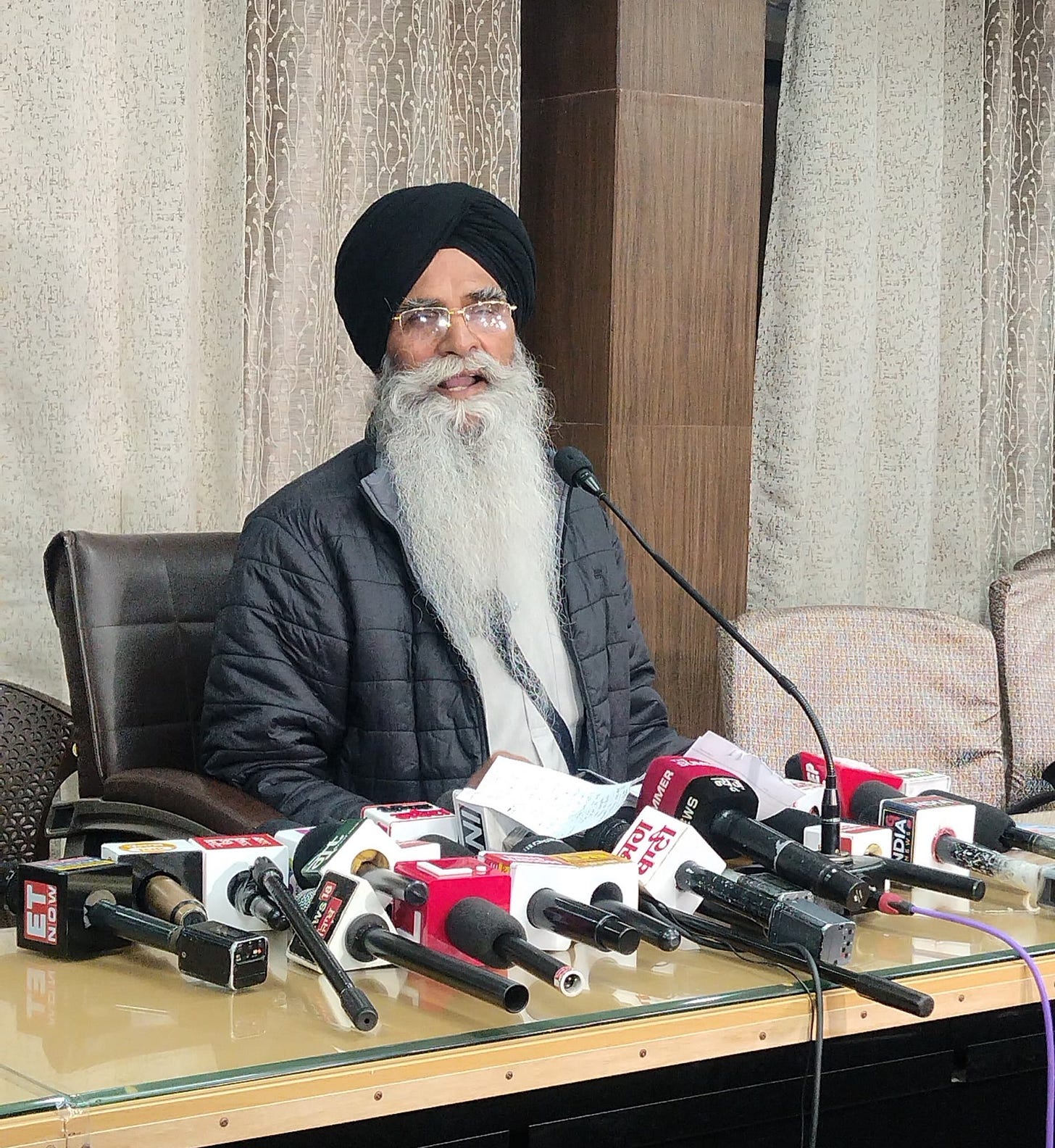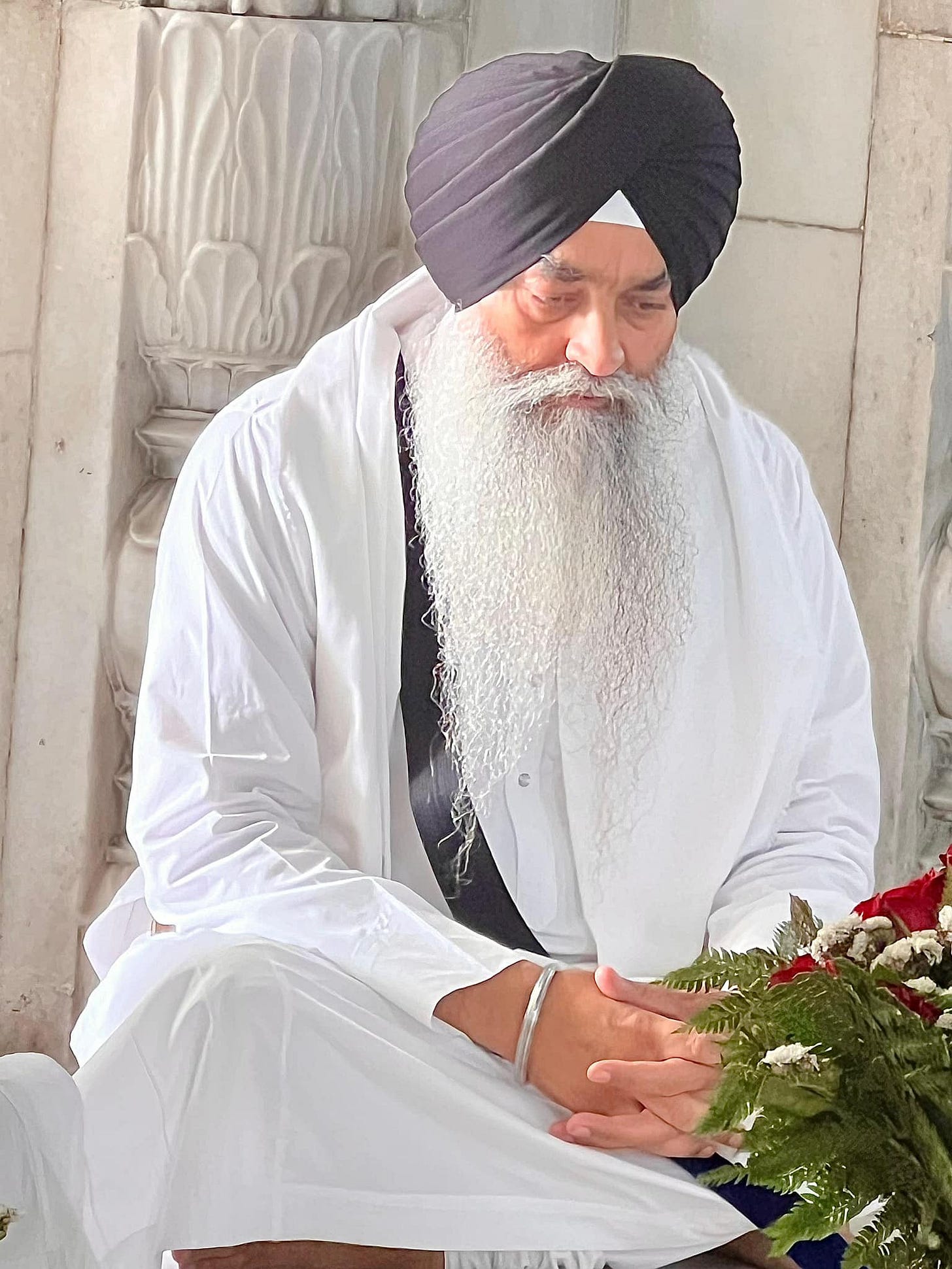Crisis in Sikh Leadership: SGPC President Harjinder Singh Dhami Resigns Amid Panthic Upheaval
With SGPC electoral rolls closing on March 10, 2025, and SAD set to elect its new President on March 1, this moment of crisis could serve as a catalyst for significant realignments in Sikh leadership.
The Resignation of SGPC President: A Turning Point in Sikh Institutional Politics?
In a dramatic turn of events, Advocate Harjinder Singh Dhami resigned today as the President of the Shiromani Gurdwara Parbandhak Committee (SGPC) and also requested Sri Akal Takht Sahib to relieve him from his duties as the convenor of the seven-member committee that was constituted as part of the December 2 Hukamnama to oversee the Shiromani Akali Dal’s (SAD) new membership drive and guide the party until the election of a new Party President. Advocate Dhami made the announcement during a press conference in Amritsar (video), where he refused to take any questions from the media. His resignation will now be placed before the SGPC Executive Committee for formal acceptance.
In his statement before media-persons, Advocate Dhami explicitly cited the recent Facebook post of 13th February of Jathedar Sri Akal Takht Sahib Giani Raghbir Singh, who had unequivocally condemned the dismissal of Giani Harpreet Singh as Jathedar of Takht Sri Damdama Sahib. Dhami stated that he was stepping down on moral grounds due to these remarks, while reaffirming his commitment to Sri Akal Takht Sahib as a humble Sikh.
This unexpected resignation marks the culmination of a series of high-stakes developments that have unfolded since December 2, 2024, when Sri Akal Takht Sahib declared the present SAD leadership "unfit" and formed a seven-member supervisory committee to oversee the party’s membership drive. What followed was a turbulent sequence of internal conflicts, power struggles, and religious-political maneuvering, which ultimately led to today's dramatic moment.
A Chronology of Key Events Leading to Dhami’s Resignation
To understand the significance of this resignation, it is essential to revisit the major events and power shifts that shaped the present crisis:
December 2024
December 2 – Akal Takht issues a historic Hukamnama, declaring the present SAD leadership unfit and forming a seven-member committee to supervise the party’s membership drive.
December 9 – The SGPC convenes an emergency executive meeting to discuss urgent matters, including the assassination attempt on SAD leader Sukhbir Singh Badal.
December 19 – A special SGPC executive committee meeting is held at Gurdwara Degsar Sahib, Katana (Ludhiana), forming a three-member panel to investigate Jathedar Giani Harpreet Singh.
December 23 – SGPC President Harjinder Singh Dhami calls an urgent executive meeting to address the escalating controversy over the inquiry against Giani Harpreet Singh.
December 31 – The SGPC executive committee extends the term of the investigation against Giani Harpreet Singh by another month.
January 2025
January 20 – SAD launches its membership drive without consulting the seven-member committee appointed by Sri Akal Takht Sahib.
February 2025
February 5 – The seven-member supervisory committee holds its first meeting at Bahadurgarh, Patiala, asking SAD to clarify whether it intends to restart the membership drive afresh.
February 10 – SGPC dismisses Giani Harpreet Singh as Jathedar of Takht Sri Damdama Sahib, triggering major backlash.
February 11 – The seven-member committee schedules its next meeting and invites SAD’s working president Balwinder Singh Bhundar to discuss the membership drive.
February 13 – In an unexpected intervention, Jathedar Sri Akal Takht Sahib Giani Raghbir Singh publicly condemns the dismissal of Giani Harpreet Singh in a Facebook post, intensifying the crisis.
February 17 – Harjinder Singh Dhami resigns as SGPC President and from the seven-member committee, citing the Jathedar’s remarks as the reason.
Implications of the Resignation: A Watershed Moment for Sikh Politics
The resignation of Harjinder Singh Dhami is more than an internal SGPC crisis—it signals a profound realignment within Sikh religious and political institutions. The key takeaways from this development are:
1. Legitimacy Crisis for SAD’s Control Over SGPC
The resignation underscores the deepening cracks within the SGPC and SAD. When the President of SAD’s most important institutional arm resigns citing a Jathedar’s public disapproval, it is a direct challenge to the legitimacy of SAD’s authority over Sikh institutions.
2. Reinforcement of the Narrative Against SAD’s Political Interference in SGPC
Jathedar Raghbir Singh’s public condemnation of Giani Harpreet Singh’s removal had already strengthened the argument that SAD has been misusing SGPC for political control. Dhami’s resignation adds further credibility to this perspective, potentially weakening SAD’s institutional grip.
3. Momentum for Independent Panthic Mobilization
The resignation, coming after a Jathedar’s direct intervention, paves the way for broader Panthic mobilization against SAD’s dominance. Various Sikh organizations, including independent Panthic factions and former SGPC leaders, could now unite under a common agenda for reform.
4. Weakening of Sukhbir Badal’s Leadership
Sukhbir Singh Badal has been trying to rebrand and reform SAD, but the public fallout from the removal of Giani Harpreet Singh and now Dhami’s resignation could further erode his authority, particularly among religiously inclined Sikh voters.
5. A Major Factor in Upcoming SGPC and Rural Punjab Elections
With SGPC elections on the horizon and Zila Parishad & Panchayat Samiti elections scheduled by May 31, 2025, this development could influence rural voter sentiment. SAD, which once relied on a strong religious-Panthic voter base, may now struggle to maintain its influence in Punjab’s villages.
6. A Boost to ‘Miri-Piri Sewa Dal’
AMiri-Piri Sewa Dal, envisioned as a Panthic reform movement, could gain traction from this controversy. If Giani Harpreet Singh and his allies strategically mobilize support, they could consolidate a broader anti-SAD front in Sikh politics.
What’s Next? Our Video Analysis
The resignation of Harjinder Singh Dhami has reshaped the power dynamics within the SGPC and SAD, potentially marking a defining moment in Sikh religious and political affairs. As the SGPC Executive Committee prepares to deliberate on Dhami’s resignation, all eyes will be on how SAD responds to this internal crisis.
With SGPC electoral rolls closing on March 10, 2025, and SAD set to elect its new President on March 1, this moment of crisis could serve as a catalyst for significant realignments in Sikh leadership.
➡️ Watch my full analysis and perspectives on these unfolding events in my YouTube live video:
🎥 [Embedded Your Video Above]
A Defining Moment in Sikh Politics
What’s Next? Dhami’s Legacy
While Advocate Harjinder Singh Dhami has attempted to redeem his position in the eyes of the Panth by taking moral responsibility and attributing his resignation to deference towards the views and sentiments of Jathedar Sri Akal Takht Sahib, many see this move as belated and reactive rather than principled. His actions since December 2, 2024, have largely been viewed as dilatory tactics, if not outright defiance of the historic Hukamnama.
With checkmate imminent—as the seven-member committee was scheduled to meet tomorrow (February 18, 2025), and many of its members reportedly inclined to nullify the unilateral membership drive carried out by SAD—this resignation appears to be his only honorable exit before an official repudiation by the committee.
Harjinder Singh Dhami’s resignation has triggered a fresh wave of uncertainty within Panthic politics, exposing the fragile balance of power among Akal Takht, SGPC, and SAD. This event underscores the ongoing tug-of-war between religious authority and political control over Sikh institutions, and the cracks in the traditional power structure have now become more apparent than ever.
With the SAD presidential election scheduled for March 1, 2025, and the deadline for claims and objections on SGPC electoral rolls set for March 10, 2025, this crisis is far from over. The unfolding developments could reshape the leadership of both SGPC and SAD, with the possibility of a major realignment in Sikh religious and political affairs. The Panth now stands at a crossroads, and the decisions made in the coming weeks could define the future course of Sikh institutional governance and broader panthic politics.
This story is still evolving. Subscribe to my Substack for more updates, deep dives, and independent analysis on Sikh and Panthic affairs.






